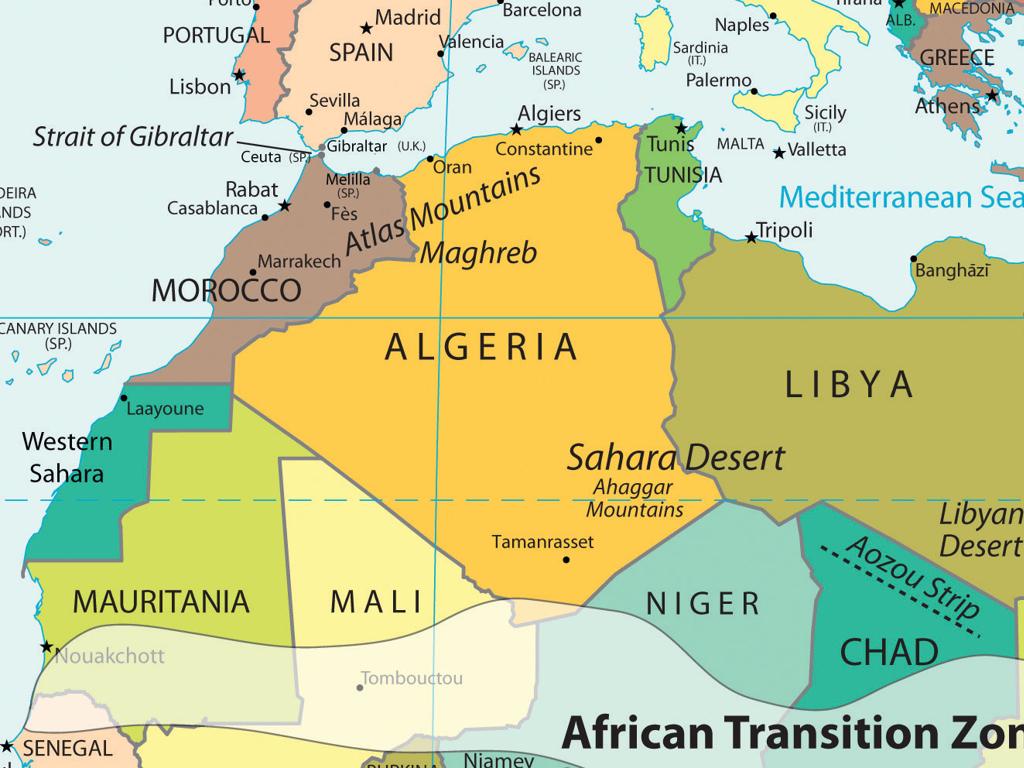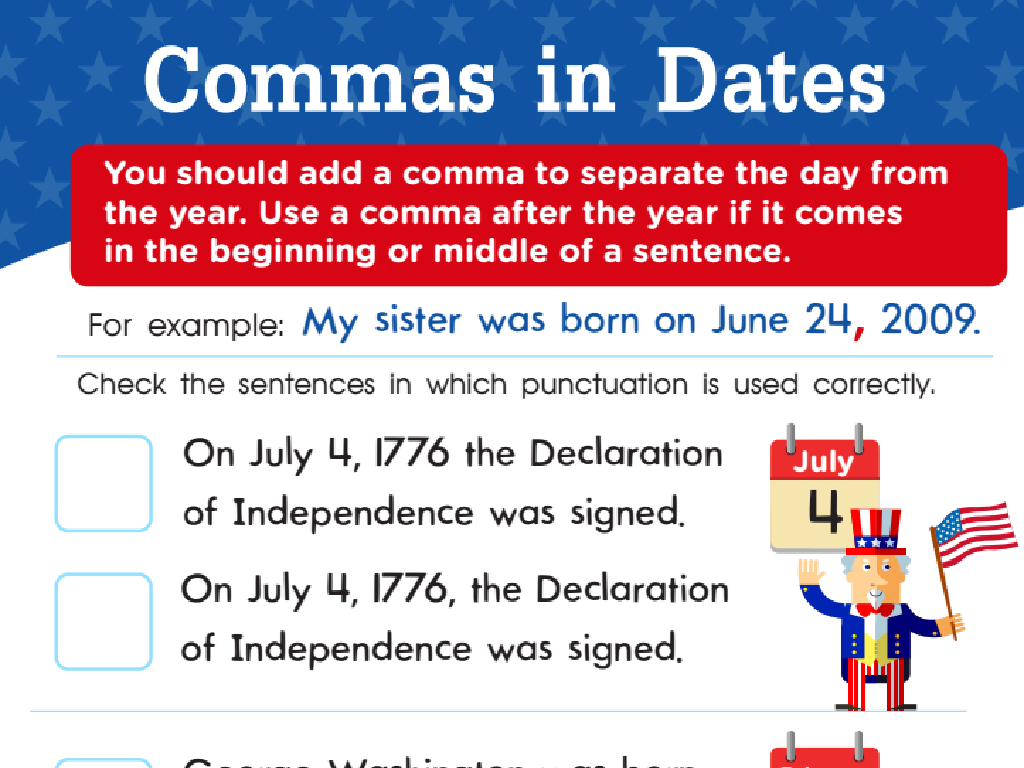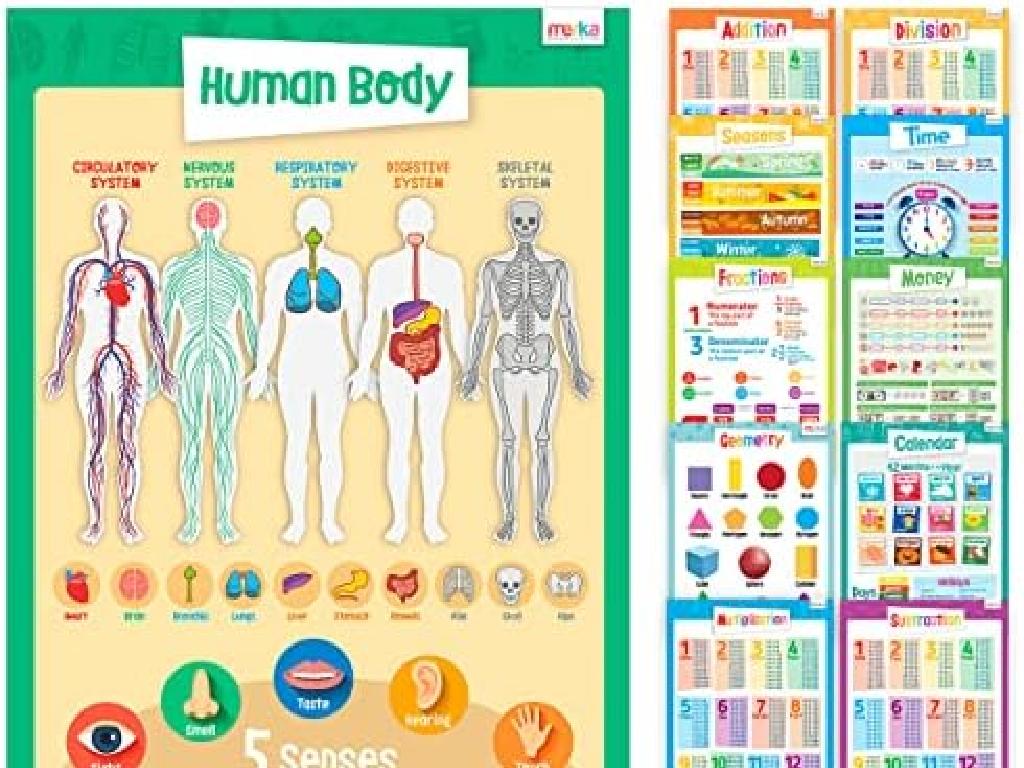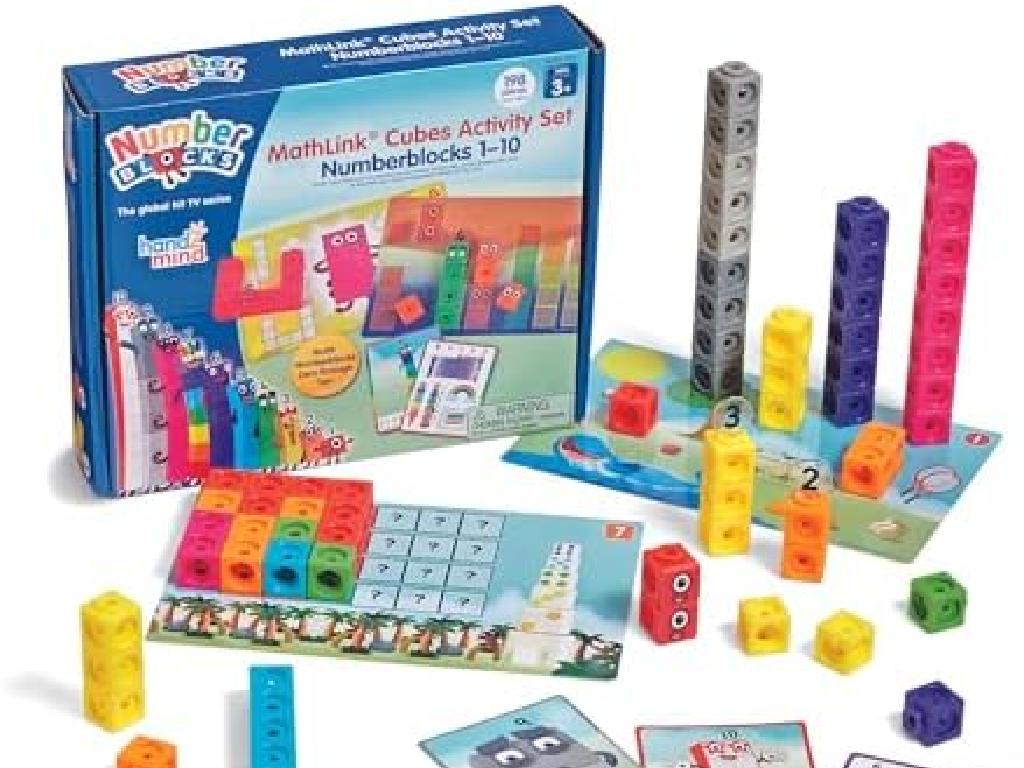Coral Reef Biodiversity And Human Uses: Evaluate Solutions
Subject: Science
Grade: Eighth grade
Topic: Conservation
Please LOG IN to download the presentation. Access is available to registered users only.
View More Content
Coral Reef Biodiversity and Human Impact
– Explore ocean ecosystems
– Coral reefs: biodiversity hotspots
– Reefs support 25% of marine life
– Human uses of coral reefs
– Reefs provide food, tourism, and coastal protection
– Evaluating conservation solutions
– Discuss sustainable practices and restoration efforts
|
This slide introduces students to the significance of coral reefs within ocean ecosystems and their role in biodiversity. Emphasize that coral reefs are not just beautiful but are crucial for supporting a vast array of marine life, making them biodiversity hotspots. Highlight the various ways humans rely on coral reefs, including for food sources, tourism, and their role in protecting coastlines from erosion. Finally, engage students in a discussion about the importance of conservation solutions, such as sustainable fishing practices and coral restoration projects, to mitigate human impact and preserve these vital ecosystems for future generations.
Exploring Biodiversity in Coral Reefs
– Define biodiversity
– Variety of life in an ecosystem or the planet
– Importance of biodiversity
– Biodiversity sustains ecosystems, providing vital services
– Coral reef biodiversity
– Coral reefs are home to numerous species, showcasing high biodiversity
– Human impact on reefs
– Overfishing, pollution, and climate change threaten reef health
|
This slide introduces the concept of biodiversity and its significance, particularly in coral reef ecosystems. Biodiversity refers to the variety of life found in a particular habitat or on Earth, including all species of plants, animals, and microorganisms, the genes they contain, and the ecosystems they form. It’s crucial for the resilience and functionality of ecosystems. Coral reefs are among the most diverse and productive ecosystems on the planet, often referred to as the ‘rainforests of the sea.’ They provide shelter, food, and breeding grounds for many marine organisms. However, human activities such as overfishing, pollution, and the global effects of climate change are posing severe threats to these vibrant ecosystems. Encourage students to think about how the loss of biodiversity in coral reefs would affect not only marine life but also human societies that rely on them.
Coral Reefs: The Rainforests of the Sea
– Coral reefs: diverse ecosystems
– Home to 25% of marine species, reefs are like underwater cities full of life.
– Coral reefs’ role in marine life
– Reefs provide habitat, food, and breeding grounds for countless marine organisms.
– Symbiosis: life in cooperation
– Organisms like clownfish & anemones depend on each other for survival.
– Protecting reef biodiversity
|
This slide introduces students to the concept of coral reefs as critical and diverse marine ecosystems, often compared to rainforests due to their rich biodiversity. Emphasize the importance of coral reefs in supporting marine life, providing food, shelter, and breeding grounds. Highlight symbiotic relationships, such as between clownfish and sea anemones, as examples of cooperation in these ecosystems. Discuss the significance of protecting coral reefs to preserve marine biodiversity and the health of our planet’s oceans. Engage students by asking them to think of other symbiotic relationships they know and the impact of losing such a vital ecosystem.
Human Uses of Coral Reefs
– Coral reefs in medicine
– Reefs provide resources for medical research and pharmaceuticals
– Reefs impact on tourism
– Tourism relies on the beauty of reefs, but must be balanced with conservation
– Fishing within reef ecosystems
– Fishing practices can harm or help reef health depending on methods used
– Sustainable practices for reefs
– Implementing sustainable fishing and tourism to protect reef biodiversity
|
This slide aims to educate students on the various ways humans utilize coral reefs and the importance of evaluating sustainable solutions to preserve these ecosystems. Highlight the role of coral reefs in developing medicines, including treatments for cancer and pain. Discuss how tourism can both benefit and threaten reef health, emphasizing the need for responsible tourism practices. Explain how overfishing can damage reef structures and deplete fish populations, but sustainable fishing practices can maintain the balance. Encourage students to think critically about how human activities impact coral reefs and to consider solutions that allow for use without compromising the reefs’ future.
Threats to Coral Reefs: Human Impact and Environmental Challenges
– Human activities damaging reefs
Coastal development, tourism, and destructive fishing practices harm reef structures.
– Climate change leading to bleaching
Rising sea temperatures cause corals to expel algae, leading to bleaching and potential death.
– Pollution’s role in reef decline
Toxins and waste from land can smother corals, blocking sunlight and poisoning marine life.
– Overfishing disrupting reef ecosystems
Removing large numbers of fish affects the balance of the reef ecosystem, leading to its decline.
|
This slide aims to educate students on the various threats that coral reefs face due to human activities and environmental changes. Discuss how coastal development, pollution, and certain fishing methods can cause physical damage to reefs. Explain the process of coral bleaching, emphasizing the relationship between corals and algae, and how increased sea temperatures disrupt this. Highlight how pollution, including plastic waste and chemical runoff, can be detrimental to reef health. Lastly, talk about the impact of overfishing on the delicate balance of reef ecosystems. Encourage students to think critically about how these issues are interconnected and the importance of sustainable practices to protect these vital ecosystems.
Evaluating Solutions for Coral Reef Conservation
– Conservation strategies importance
– Strategies include reducing pollution, sustainable fishing, and public education.
– Marine Protected Areas (MPAs)
– MPAs limit human activities to protect biodiversity.
– Restoration projects benefits
– Projects like coral transplantation help damaged reefs recover.
– Assessing the impact
– Monitoring health and diversity to gauge success.
|
This slide aims to educate students on the various approaches to conserving coral reefs, emphasizing the importance of each strategy in the broader context of marine conservation. Discuss how conservation strategies can mitigate human impact and promote reef resilience. Explain the role of Marine Protected Areas in safeguarding ecosystems and maintaining biodiversity. Highlight restoration efforts, such as coral gardening, which actively rehabilitate damaged reefs. Finally, stress the importance of evaluating the effectiveness of these solutions through scientific monitoring and research. Encourage students to think critically about how these solutions can be implemented and improved.
Case Study: The Great Barrier Reef Conservation
– Explore the Great Barrier Reef
– Largest coral system & diverse marine life
– Review Australia’s conservation efforts
– Policies & actions to protect the reef
– Discuss lessons learned
– Successes & challenges in reef conservation
– Understand global implications
– How reef health affects the world
|
This slide introduces students to the Great Barrier Reef, emphasizing its importance as the largest coral reef system and its incredible biodiversity. Highlight Australia’s conservation strategies, including legislation, protected areas, and research initiatives. Discuss the outcomes of these efforts, what has worked, and what challenges remain. Conclude with a discussion on how the health of the Great Barrier Reef has far-reaching effects on global marine biodiversity, climate regulation, and even economies. Encourage students to think critically about how local actions can have international consequences and the importance of global cooperation in conservation.
Class Activity: Coral Reef Conservation Plan
– Form small discussion groups
– Develop a coral reef conservation plan
– Consider factors like pollution, fishing, tourism, and climate change
– Focus on local conservation efforts
– Research how your community impacts reefs and how to mitigate it
– Prepare to present your plan
|
This activity is designed to engage students in collaborative problem-solving related to coral reef conservation. Divide the class into small groups, assigning each the task of developing a comprehensive conservation plan for a hypothetical coral reef. Encourage them to consider local conservation efforts and how these can be applied or improved. Each group should address common threats to coral reefs, such as pollution, overfishing, irresponsible tourism, and climate change. They should also think about practical measures that can be taken to protect and preserve coral reefs. After the group discussion, each group will present their plan to the class, explaining the rationale behind their strategies. For the teacher: Prepare a list of resources for students to use, facilitate discussions, and ensure each group stays on task. Provide feedback after each presentation to highlight the strengths of each plan and areas for improvement.
Conclusion: Preserving Our Coral Reefs
– Recap coral reef significance
– Reflect on conservation actions
– Consider daily habits that impact reefs and how to adjust them for conservation.
– Engage in questions and discussion
– Commit to individual contributions
– Pledge to reduce plastic use, support reef-friendly businesses, and educate others.
|
This slide aims to summarize the importance of coral reefs to our ecosystem and encourage students to reflect on their role in conservation efforts. Begin by recapping the key points about the biodiversity of coral reefs and their significance to marine life and human industries. Then, guide students to think about actionable steps they can take in their daily lives to contribute to coral reef conservation, such as reducing plastic waste, being mindful of sunscreen choices, and advocating for sustainable fishing practices. Open the floor for questions to foster a discussion that allows students to express their thoughts and ideas on the topic. Finally, encourage each student to make a personal commitment to an action they can take to help protect coral reefs, emphasizing the impact of collective individual efforts.






